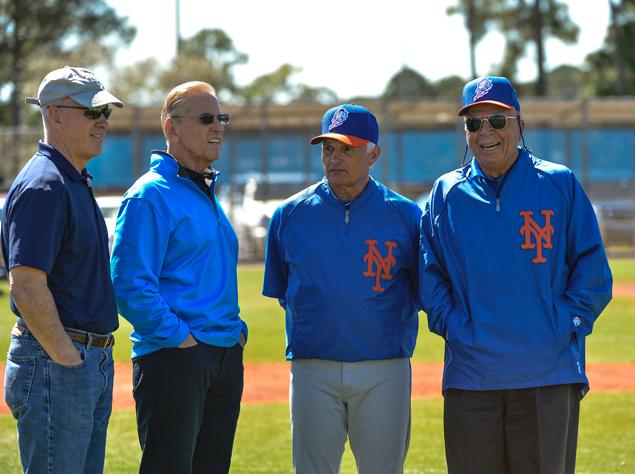
The last 48 hours have been brimming with reports from various media outlets on the state of the Mets – not on the field – but fiscally.
The Mets want to convey a sense that they are now financially fit. However, the folks who are considered experts on the matter of team valuation, those who speak to the lenders, and those analyzing all the available data, still portray a financial picture of the Mets that doesn’t quite measure up with what is being reported.
There was an extensive analysis of the situation this morning in the New York Times.
The payroll modesty continues even as the Mets — and the 29 other major league teams — will receive equal portions of new television contracts whose annual average payments are doubling this season to $1.5 billion from $750 million, and despite the recent refinancing of a $250 million loan, at a lower rate, that removes the pressure the Mets were under to repay it in full later this year. But even as money is looser and banks are no longer huffing and puffing at the door of the Mets co-owner Fred Wilpon, the Mets seem to be staying cautious about spending.
Regarding that publicized refinancing that prevented a back-breaking $250 million dollar debt payment that was due in June, the Times article articulated that the banks did not impose a salary cap on the Mets as a condition of the refinancing, but, as a practical matter, they did not have to.
Raising payroll sharply to lure expensive free agents before attendance recovers is a formula to generate the sort of steep losses that peaked at $70 million for the Mets in 2011. Meanwhile, the drop in average attendance at Citi Field to 26,366 last season — it has fallen by 32.5 percent since the stadium opened in 2009 — has created a predictable downward spiral of ticket, parking and concession revenue.
Documents are available that show revenue from the stadium’s 10,635 most expensive seats has fallen 58 percent, to $41.8 million from $99.3 million in 2009. In that period, concession sales have decreased 29 percent and parking revenue has dropped 20 percent.
Jodi Hecht, an analyst for Standard & Poor’s, said she had projected a drop in the 2014 cash flow earmarked to make the annual debt payments of about $43 million. The rating agency reaffirmed its BB rating — two levels below junk — of Citi Field bonds last December. But the agency lifted its formerly negative outlook on the bonds, based on the belief that cash flow will eventually stabilize.
As I’ve written previously, for the much ballyhooed spending the Mets were going to do this offseason, the fact is that the Opening Day payroll will be down for the third year in a row.
Additionally, the current Mets payroll which stands at $87.5 million ranks as the seventh lowest in major league baseball. That figure includes deferred payments from Jason Bay as well as the option buyout on Johan Santana. Effectively, the on-the-field payroll is ranked even lower. I predicted the opening day payroll to come in lower than 2013 all along and as far back as last August when the “we are going to spend” chants started to get louder.
The Mets are reporting that Opening Day should be a sell-out, yet plenty of tickets remain available on the team’s website this morning and the secondary market is flush with plenty of available ticket inventory in 2-6 seat lots. Ticket giveaways are being promoted quite heavily and I’d also argue that if 1,000 or more tickets were handed out freely, does that still technically qualify as a “sold” out affair?
I think the forecast is less stormy today than it was a year ago. But there are still too many signs of fat-trimming and payroll cutting for me to declare that the Mets are back to a position where they could add missing pieces at market value if they were to find themselves in the thick of a wild card chase this summer.
However, it is my fervent hope that they can prove me wrong on that.















